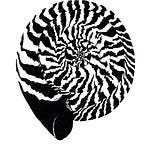Wind
In Patagonia
There are places and times in the far cordillera of Patagonia when there is no wind. But they seem few, and preternaturally quiet interludes. At these still times, it seems as if the world is waiting. Cliffs and mountain spires, screes and scrubby, misshapen trees wait, as if caught in arrested motion by a giant bell tolling the silence.
To talk at times like these is to make a small and scratchy noise in a giant silence, broken only by the roar of a plunging ice fall far across the valley. You can feel the insignificant meanness of humans in such a landscape. To sit, in the silence, on a ridge, and stare at the awesome blue ice of a living glacier larger than humans will ever be, is to know what absence of wind in a windy landscape means. It says that we are small and young, and only here for a moment. And that we talk too much.
The wind is never silent for long in Patagonia. It greets you with dust in your teeth and a biting chill. It rushes off the foaming sea and blasts across the plains, lifting condors and chasing dust devils. It drives steep waves across the lakes and screams up the mountain slopes to mould the clouds into shapes of flying saucers and smoke plumes. It makes the gauchos horses turn tail, and the soldiers at dreary border posts hunch into their greatcoats. They stamp my passport, take my name, and I’m gone with a busload of gringos, to go where the wind takes me.
Walking alone all day until my aching back made me seek shelter, I broke off the trail and scouted for a sheltered spot to spend the night. A shallow ravine in the beech forest promised safety from the wind that I knew would come at night. As darkness fell, I sat on a rock beside the glacier far below me, and the wind began, softly at first. It sends chilly tendrils down the ice-bound valley, making me draw my parka tighter. Soon it was combing my hair, licking at me with cold flames. I can laugh now, but at midnight, when all the furies came down from the mountains of Torres del Paine, I thanked the forest for shelter, just metres away from my exposed viewpoint. At night in Patagonia, the wind is a living thing. It comes in great gusts, starting as a dull moan, and gaining in intensity until it is rushing down the valleys and across the glaciers like a thousand express trains. It tears up the slopes from the glacial ice river and whooshes over the forest, which bends before it with a hissing of leaves and a clashing of branches. All other sounds are drowned in the roar as the wind devils play with the land.
In my tent, the darkness grows denser, my senses are totally alert, and I listen. There is no place for mans voice in the full throat of the night wind.
